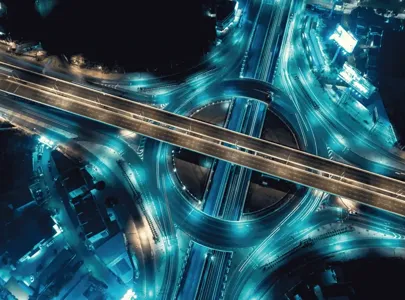The hidden environmental impacts of operational delivery
How your SME can improve logistics sustainability
Sustainability is one of the first things customers look for when it comes to picking a logistics company that can get their products to the online shopping end user.
Van and lorry fleets that fail to take the quickest, most cost-effective routes can cost time and money… as well as damaging their brand to the extent that it loses out on business. Practical and easy to implement steps such as analysing operations using route optimisation software can transform the way SMEs run, saving money, the environment and improving their customer service.
The best small businesses celebrate their credentials for looking after the planet by using smarter delivery routes which in turn grows customer satisfaction and the delivery experience. Because it's not just about moving products from point A to B any more… it’s about customer experience and sensible business growth.

Understanding the impact
As a responsible small business owner, you probably know about how your actions affect the environment and that every trip your vehicles make adds to carbon emissions and traffic congestion. You might even be aware that the smallest of data-led tweaks to your delivery plan can reduce your impact on the environment even more.
One easy way a service business can show it cares is by reducing its carbon footprint. By boosting route efficiency, you are helping to reduce a major part of your business's impact on the environment. Every little action matters, and as a forward-thinking SME you can make a real difference.
How your choices effect your carbon footprint
Every choice you make affects the carbon footprint of your delivery business, from vehicle engine type and route optimisation to delivery frequency. Reviewing the routes your drivers have always taken could reduce their mileage or take them closer to locations where the fuel is cheaper.
Alternatively combining orders and allowing flexible delivery times can reduce extra trips, lessening the environmental impact of your operation. Networks of forecourts that offer cheaper fuel are becoming an increasingly popular tool for SMEs wanting to be greener. They are not just cheaper, they also help track fuel use, analyse spending patterns and help you identify other ways to improve.
By gaining a deep dive insight into how much fuel you use and when and where you buy it, you can make better choices that match your sustainability goals and improve the customer's delivery experience.
How do you prepare for a greener delivery model?
Moving to a greener set-up for your delivery operations needs careful planning and the right tools. Look closely at your current operations to see where you can improve. Then, look at the resources and technologies that might help you hit your sustainability goals. Tools like delivery management software make your work smoother and reduce your impact on the environment.
5 steps to start the switch…
1: Analyse your operations
Gather data analysis on your routes, where your customers are, how often you deliver and any problems you've noticed. Take a closer look at your most frequent delivery places and see if there are there any bottlenecks on the routes and how could you improve fuel consumption.
2: Implement UK route optimisation software
This is a big help for businesses that want to make delivery processes better. It uses smart algorithms to look at data like fuel prices and current traffic levels to find the best and cheapest delivery routes. By automating your route planning, you will see reduced fuel costs, fast delivery times and increased productivity and morale.
3: Keep launch costs down
The easiest way to achieve the insights you need is with a fuel card programme tailor-made for small and medium-sized enterprises to save money. The app they come with gives drivers GPS access to lower fuel prices, streamlines the expenses process, reduces admin and provides your finance department with detailed VAT-ready reports.
4: Incorporate them into your strategy
It's important to think about the coverage providers offer before signing up. Make sure they work at lots of locations along your route. It's also good for your team if they offer rewards to your drivers using them.
Pick a card supplier that doesn't have any hidden fees and once your team are all issued with cards, keep checking how things are going so you can see what is working and what needs change. Be flexible in your approach.
5: Tell your customers
Customers want brands and functionality that share their values so if you're embracing environmentally friendly initiatives, tell them. As well as sharing your sustainability story, ask for their feedback on your sustainable delivery methods.
Help the planet to help your business
It's easier to make better decisions when you think about how your operations affect the world. Tools like fuel cards are a quick-win first step towards becoming more eco-friendly, improving your brand and gaining new customers… as well as saving money sustainably.


